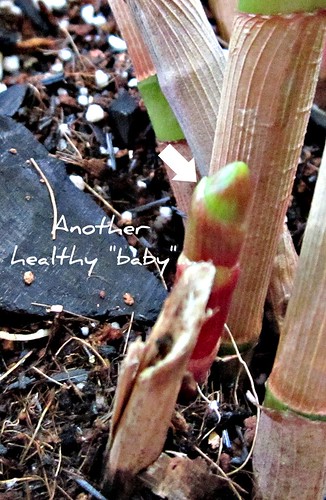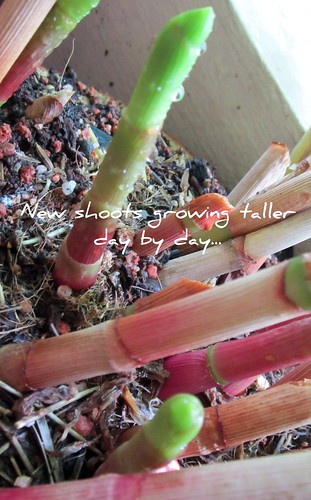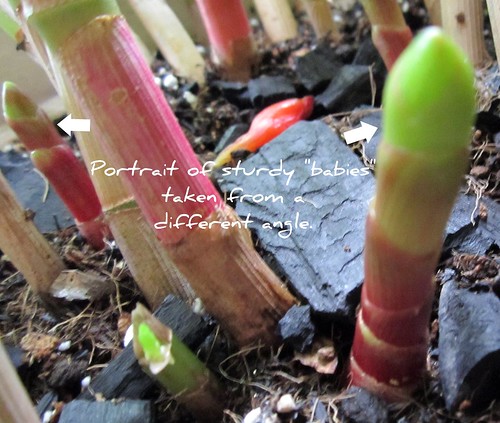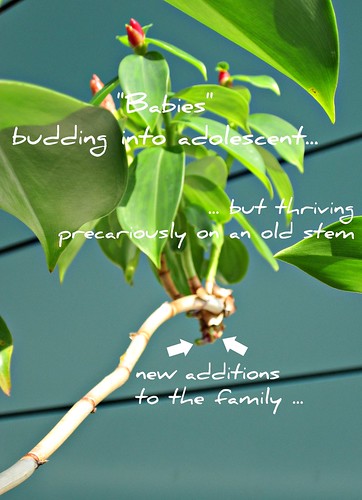Thus far, I noticed that there were frequent occurences of a phenomenon whereby the new shoots start growing out from a section (of the stem) that holds the red bulb-like flower heads.
Alternatively, new shots could start growing out from mid-sections of the stem as the existing "adult" started maturing.
Alternatively, new shots could start growing out from mid-sections of the stem as the existing "adult" started maturing.
And becox I'm staying in a flat with limited space & sunlight for gardening, those "babies" who grew out from the stems required repotting in new soil. I've resorted to passing them on to the community garden & hope that they would thrive well there.
The photograph below shows quite a huge bunch of budding adults growing on an old stem after the "red corn" flower head of the "mother" had been trimmed off to beautify the plant & also, make way for her "babies" who chose to grow out from that section of the stem:
The photograph below shows quite a huge bunch of budding adults growing on an old stem after the "red corn" flower head of the "mother" had been trimmed off to beautify the plant & also, make way for her "babies" who chose to grow out from that section of the stem:
If these pretty looking newbies aren't taken down & repotted elsewhere, chances are they would gradually die off as they aren't taking enough nutrients & cannot simply survive based on just sunlight & a limited amount of water resources from the rain.
The fact that they were budding with such pretty "red corn" flower heads when they are dwarfs at a height below 20cm, as compared to counterparts growing on soil, might infer that they are not taking in enough fluids & vitamins.
Given such a situation, these darlings would have a shorter lifespan than the rest of its "sisters" who were grounded on solid earth, i.e. soil.
(Photograph below shows one of their "sisters" growing alot taller at a height of 76cm with a sturdy stem from the soil, but not yet in the budding stage of growing a "red corn")
The fact that they were budding with such pretty "red corn" flower heads when they are dwarfs at a height below 20cm, as compared to counterparts growing on soil, might infer that they are not taking in enough fluids & vitamins.
Given such a situation, these darlings would have a shorter lifespan than the rest of its "sisters" who were grounded on solid earth, i.e. soil.
(Photograph below shows one of their "sisters" growing alot taller at a height of 76cm with a sturdy stem from the soil, but not yet in the budding stage of growing a "red corn")
As such, I trimmed down the entire old stem where these "babies" are growing on & chose to assign them to a proper nursery.
It's really painful to part with those pretty babies but I hope that they do well in their new environment where they would have all types of plants for companionship.
It's really painful to part with those pretty babies but I hope that they do well in their new environment where they would have all types of plants for companionship.







No comments:
Post a Comment